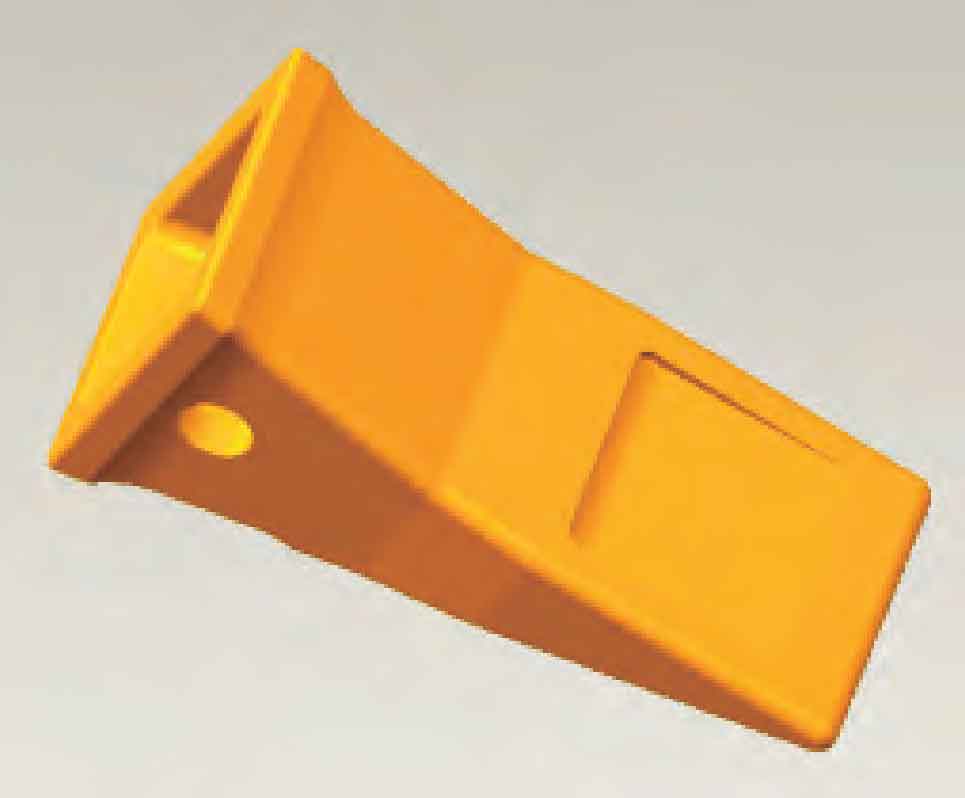Bucket teeth are critical wear components in excavator systems, subjected to severe abrasive wear and impact loads during mining operations. Premature failure of bucket teeth leads to substantial economic losses—approximately 30 million RMB annually in direct costs in China, with even greater indirect losses from operational downtime. Traditional cast bucket teeth dominate the market due to low production costs and simple processing but exhibit coarse microstructures, inclusions, segregation, shrinkage porosity, and other defects that compromise performance. Forged bucket teeth offer superior mechanical properties, including refined grain structures, elimination of casting defects, and enhanced service life (often doubling cast equivalents), positioning them as future industry standards.
Material and Experimental Methodology
The study utilized 30CrMnSi steel rods (Ø75 mm) with chemical composition detailed in Table 1. The forging and heat treatment sequence comprised: cutting → induction heating → tip forging → die forging → trimming → pin-hole punching → stamping → forging residual heat quenching → low-temperature tempering → sandblasting. Forging residual heat quenching involved immersing the bucket tooth in water at 1,150–1,170°C (post-forging temperature) for 10 s, partially exposing the tail above water for 10 s to moderate hardness, followed by full immersion until ~350°C. The bucket tooth geometry (286 mm height, 7 kg mass) is illustrated below:

| C | Si | Mn | Cr | S | P |
|---|---|---|---|---|---|
| 0.328 | 1.071 | 0.954 | 0.928 | ≤0.040 | ≤0.040 |
Post-production, a bucket tooth was sectioned (Fig. 2a) for hardness mapping using transverse (AA’, BB’, CC’, DD’) and longitudinal lines (AD, PX, A’D’). Charpy impact specimens (U-notch, 10×10×55 mm) were extracted from the failure-prone tail region (Fig. 2a: specimens 1–6). Hardness (HRC) and impact energy were measured, with fractography and microstructure analyzed via SEM and optical microscopy.
Results and Analysis
Hardness distribution varied significantly across the bucket tooth (Figs. 3a–b). Regions near the tip (AA’) and pit vicinity (DD’) showed lower hardness (34–38 HRC), while central zones (BB’, CC’) maintained higher, uniform values (44–48 HRC). Impact testing revealed drastic differences: specimens 1–4 (pit sidewall) averaged 15.3 J impact energy, whereas specimens 5–6 (tail upper edge) exhibited 56.5 J (Table 2).
| Specimen | 1 | 2 | 3 | 4 | 5 | 6 |
|---|---|---|---|---|---|---|
| Hardness (HRC) | 38 | 36 | 36 | 39 | 46 | 46 |
| Impact Energy (J) | 16.0 | 11.0 | 16.0 | 18.0 | 54.5 | 58.5 |
Microstructural analysis clarified these disparities. Specimens 5–6 (high toughness) featured fine lath martensite with small cleavage facets and abundant tear ridges (Fig. 4). Conversely, specimens 1–4 (low toughness) displayed coarse martensite bundles with large cleavage planes and minimal tearing, indicating brittle fracture. Austenite grain growth kinetics explain this divergence:
$$d = k \cdot t^n \cdot \exp\left(-\frac{Q}{RT}\right)$$
where \(d\) is grain size, \(k\) and \(n\) are constants, \(Q\) is activation energy, \(R\) is the gas constant, \(T\) is temperature, and \(t\) is time. The pit sidewall’s enclosed geometry delayed cooling, prolonging exposure to high temperatures (≥900°C vs. tail edge’s ~700°C during partial quenching). Extended dwell time at elevated temperatures amplified austenite grain coarsening, degrading toughness. Hardness reduction at the tip and pit vicinity also correlated with slower cooling rates, potentially permitting non-martensitic transformation products.
Process Optimization Strategy
To enhance pit sidewall toughness in bucket teeth, austenite grain refinement is essential. Reducing the initial forging temperature minimizes grain growth but risks excessive cooling at the tip. A balanced approach involves:
- Lowering start-forging temperature to limit grain coarsening.
- Implementing localized induction/flame heating at the tip post-forging to compensate for thermal losses.
This strategy optimizes microstructure without compromising energy efficiency, as tip reheating offsets reduced bulk heating costs.
Conclusions
- Mechanical properties in 30CrMnSi steel bucket teeth exhibit spatial heterogeneity: hardness diminishes near the tip and pit, while impact energy at the pit sidewall is 73% lower than at the tail edge.
- Coarse prior-austenite grains at the pit sidewall—caused by prolonged high-temperature exposure (≥900°C) due to restricted heat dissipation—drive toughness reduction. Hardness variations correlate with localized cooling rates.
- Modified forging parameters (reduced start temperature + tip reheating) can homogenize microstructure, enhancing bucket tooth reliability.
